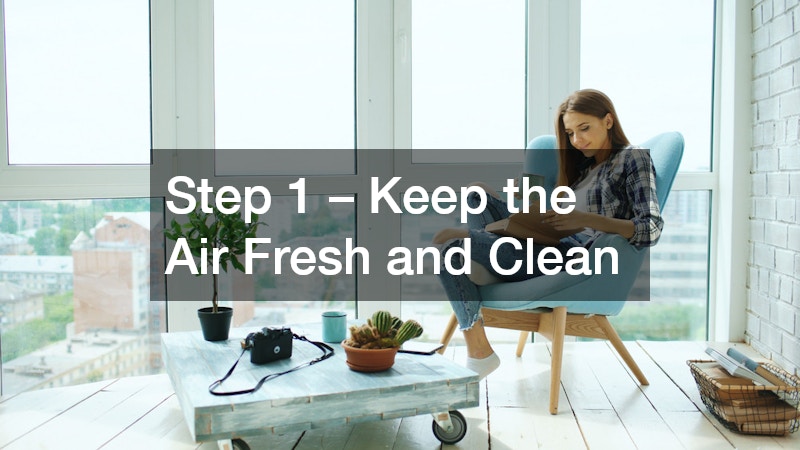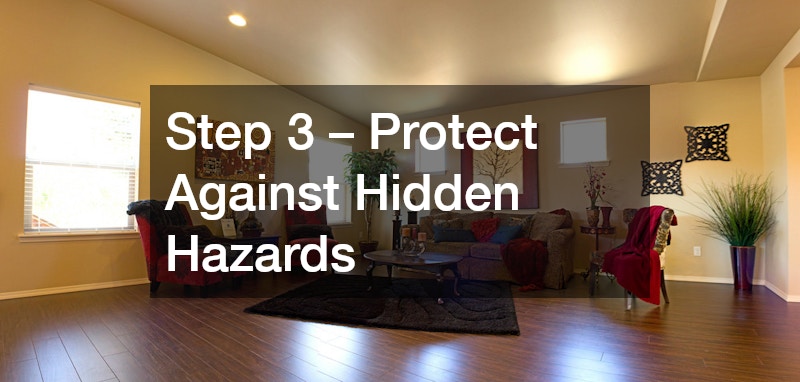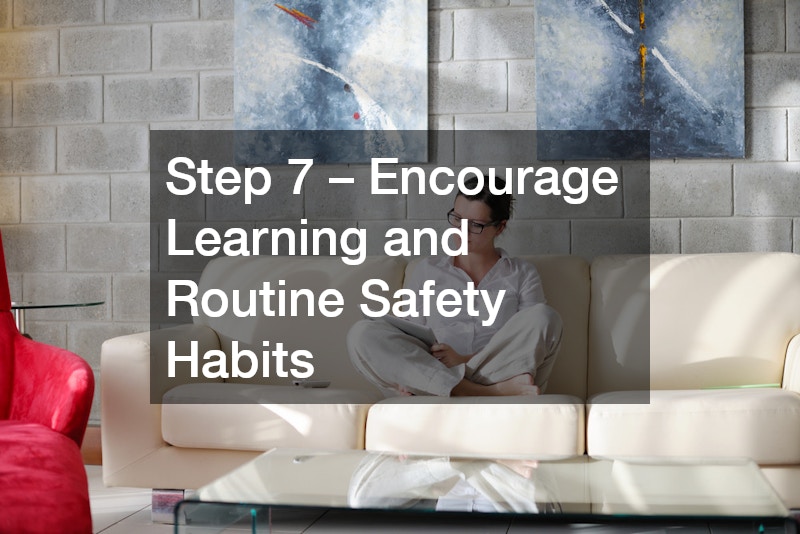A home isn’t just where you sleep — it’s where you grow, share, and build your life together. It’s where first steps happen, where laughter fills the halls, and where family memories are made every single day. Yet, behind the joy and routine of daily life, your home environment plays a major role in your family’s health and safety.
From clean air to secure structures, small details often have the biggest impact. The right choices, habits, and new home upgrades can improve comfort, reduce risks, and create a peaceful living space that supports everyone’s well-being. A healthy, safe home doesn’t require luxury or excess — it’s about thoughtful improvements that protect what matters most: your family.
Creating a healthier, safer home means paying attention to both the visible and invisible factors that influence your daily life. Air quality, lighting, moisture levels, and even design decisions all play a part. With the right mindset and a few well-chosen new home upgrades, your house can become a sanctuary of wellness and security for every family member.

Step 1 – Keep the Air Fresh and Clean
Air quality is one of the most important but overlooked aspects of a healthy home. Poor indoor air can lead to allergies, fatigue, or respiratory issues. Clean air, on the other hand, can boost focus, energy, and overall comfort.
Start with ventilation — open windows when possible, especially during mild weather. Letting in fresh air helps flush out indoor pollutants, cooking odors, and excess moisture. In rooms where windows aren’t an option, consider installing air purifiers or upgrading your HVAC system.
One of the best new home upgrades you can make is replacing your old air conditioning unit with a more efficient system. An air conditioner replacement can drastically improve airflow, lower humidity, and keep the air circulating evenly. Regular maintenance — such as cleaning filters and ducts — keeps allergens at bay and improves energy efficiency.
If you’re dealing with extreme seasonal temperatures, a system that handles both heating and cooling will help maintain a consistent climate. Good air circulation is key not just for comfort but for health — it keeps your family breathing easier and sleeping better.
Step 2 – Prioritize Safe, Sanitary Surfaces
A clean home is a healthy home. While deep cleaning once in a while is great, daily habits make the biggest difference in creating a sanitary, germ-free space. High-touch areas like doorknobs, light switches, and countertops can harbor bacteria. Regularly wiping them down with safe, non-toxic cleaners helps prevent the spread of illness.
For families with kids or pets, easy-to-clean surfaces are essential. If you’re remodeling or redecorating, choose durable flooring and countertops that resist stains and moisture. These materials are among the smartest new home upgrades you can make, as they simplify cleaning and enhance long-term hygiene.
Even something as simple as replacing worn carpets with hard flooring can significantly improve air quality by reducing trapped dust and allergens. Consider installing washable rugs or mats in high-traffic areas to keep dirt from spreading.
Small maintenance habits, such as sanitizing kitchen sponges, cleaning under appliances, and keeping bathroom surfaces dry, also go a long way in preventing bacteria growth. A spotless home may seem like a big task, but small daily actions help maintain a healthy living environment.

Step 3 – Protect Against Hidden Hazards
Many hazards in the home go unnoticed until they become big problems. Moisture, leaks, pests, and poor insulation can all affect your family’s health and comfort. Addressing these early helps you avoid costly repairs later — and protects your family from potential harm.
Start by inspecting your roof, attic, and basement for signs of leaks or mold. A reliable roof replacement can prevent water intrusion, which is one of the leading causes of indoor mold. Mold spores can trigger allergies and respiratory problems, particularly for young children and seniors.
Check your plumbing for slow leaks or discoloration. Hiring local plumbing contractors to perform annual inspections helps you catch issues before they lead to flooding or structural damage. If moisture has already caused problems, professionals can recommend waterproofing or cleanup solutions.
Poor insulation is another hidden issue. Drafts and inconsistent temperatures can overwork your HVAC system and make your home less energy-efficient. A spray foam insulation contractor can seal gaps and stabilize indoor temperatures, helping you save money while keeping your family comfortable year-round.
When addressing these hidden hazards, don’t forget your home’s foundation and drainage. Working with an excavating contractor ensures that your property’s grading and drainage systems direct water away from your home, reducing the risk of basement flooding and soil erosion.
Each of these measures might seem small, but together, they form a strong defense against long-term damage and health risks.
Step 4 – Eliminate Pests and Allergens Naturally
Pests aren’t just annoying — they can pose real health risks. Dust mites, cockroaches, rodents, and other invaders can trigger allergies or carry disease. Fortunately, there are natural and preventive ways to keep your home pest-free.
For families with young children, safety is key. Instead of harsh chemicals, use natural repellents like vinegar sprays, essential oils, or diatomaceous earth for minor infestations. Keep food sealed and store dry goods in airtight containers.
Regular cleaning and maintenance are among the most effective new home upgrades you can make to reduce pest problems. Seal cracks, repair window screens, and keep basements dry. If your home is prone to recurring infestations, schedule routine pest inspections with trusted professionals.
Don’t forget about bedding and furniture. Dust mites and bed bugs thrive in soft materials. Installing anti bed bug bed covers on mattresses and pillows provides a layer of defense and promotes better sleep.
Maintaining outdoor areas also matters. Trim overgrown plants, fix gaps in fences, and avoid leaving standing water around the yard. When your property is well-maintained, it naturally discourages pests from entering.

Step 5 – Make Safety Part of Your Home’s Design
A beautiful home can also be a safe one. With intentional design choices, you can enhance both appearance and protection. The best part is that many of these safety-focused changes double as aesthetic new home upgrades.
Start with lighting. Well-lit hallways, staircases, and entrances reduce the risk of accidents. Motion-sensor lights outside help deter intruders and make late-night arrivals safer.
Next, assess your home’s layout. Clear clutter from pathways, especially in homes with children or elderly family members. Add grab bars in bathrooms and non-slip mats in high-moisture areas. These details don’t have to look clinical — modern designs integrate safety with style.
Don’t forget your home’s perimeter. Professional fencing installations can protect children and pets while adding curb appeal. Sturdy, well-placed fencing also defines property boundaries and improves privacy.
If your home has a fireplace, consider hiring a chimney sweeping service at least once a year. Creosote buildup can lead to fires or poor ventilation, but professional cleaning ensures safe, efficient heating.
Lastly, keep doors and windows secure. Working with local garage door contractors can help you upgrade old mechanisms and install reinforced materials that improve both safety and insulation.
Step 6 – Choose Child- and Pet-Friendly Materials
If your home includes little ones or furry companions, it’s essential to create spaces that support safety and comfort. The materials you choose for furniture, flooring, and walls can make a big difference in everyday health.
Opt for low-VOC (volatile organic compound) paints and adhesives, which release fewer chemicals into the air. These are simple new home upgrades that improve indoor air quality. For flooring, choose soft, slip-resistant materials like cork, bamboo, or luxury vinyl — easy to clean and safe for small feet and paws.
Furniture choices also matter. Rounded edges prevent bumps and bruises, and secure wall anchors keep heavy bookshelves stable. Pet owners can benefit from durable upholstery fabrics that resist stains and hair buildup.
Don’t overlook heating and energy sources, either. Families in cooler regions might consider residential heating oil as a reliable option for maintaining warmth during winter months. Proper heating keeps the home comfortable without straining the system or releasing harmful fumes.
Designing for safety doesn’t mean sacrificing style. Many modern materials and appliances now combine health, comfort, and beauty — making it easier to create a home that feels good and functions well.

Step 7 – Encourage Learning and Routine Safety Habits
Home safety isn’t just about the physical structure — it’s also about habits. When families understand and practice safety together, everyone benefits.
Start by creating a household checklist for emergencies. Make sure every family member knows how to locate fire extinguishers, shut off water or gas, and call for help if needed. Practice drills in a calm, supportive way so children understand what to do without fear.
Education plays an important role in developing awareness. Many private elementary schools teach children about responsibility and teamwork — principles that can easily carry over into home life. Encourage kids to tidy up, store toys properly, and report anything unusual, like leaks or broken fixtures.
Even adults can set examples by following home maintenance routines, such as changing HVAC filters, checking smoke detectors, and organizing shared spaces. These consistent actions teach younger generations that safety is a shared responsibility.
Encouraging these routines is one of the most valuable new home upgrades you can make — not to the structure itself, but to your family’s mindset.
Step 8 – Create Spaces That Promote Mental and Physical Well-Being
A healthy home supports not just the body, but the mind. The way a space looks and feels directly affects your family’s mood and behavior. By paying attention to color, light, and layout, you can cultivate an atmosphere of calm and positivity.
Natural light is one of the most powerful design tools for emotional well-being. Large windows, skylights, or even reflective surfaces can brighten rooms and reduce stress. When designing new spaces, prioritize open layouts that promote connection.
Decluttering is another form of self-care. A tidy environment reduces anxiety and makes the home feel more spacious. If you’re remodeling, consider new home upgrades like built-in shelving, multipurpose furniture, or organized storage solutions.
Families who enjoy spending time together outdoors might invest in a secure, private yard. Adding seating areas, gardens, or play zones can enhance bonding time. Collaborating with professionals for fencing installations ensures that the space remains safe for children and pets while maintaining aesthetic appeal.
Lastly, temperature control and noise reduction play major roles in mental health. Efficient insulation, clean air systems, and cozy furnishings all contribute to a sense of peace.
Step 9 – Prepare for Emergencies Before They Happen
Preparedness is one of the cornerstones of family safety. It’s not about living in fear, but about planning ahead so everyone knows what to do when unexpected events occur.
Every family should have a basic emergency plan — clear exits, meeting points, and emergency contact information. Keep flashlights, batteries, and first-aid supplies in easy-to-access places.
Check that your smoke detectors and carbon monoxide alarms are working properly. These are simple but vital new home upgrades that can save lives. If your home uses fireplaces or stoves, schedule annual safety inspections.
Storm preparedness is also crucial. Heavy rains, wind, or snow can impact your home’s exterior. Maintaining gutters and roofs helps prevent damage. In case of major repairs, having a trusted roofing contractor or excavating contractor on call ensures you can address structural issues quickly.
Lastly, if your property relies on a septic system, regular septic tank pumping services are essential to avoid costly and unsanitary backups. A little planning ahead can prevent big emergencies later.
Step 10 – Maintain Your Home Year-Round
The final step to creating a healthier, safer home is consistency. Maintenance isn’t glamorous, but it’s the foundation of long-term safety and comfort. Seasonal checkups help you catch small issues before they grow into serious problems.
Create a routine maintenance schedule that includes inspecting HVAC systems, plumbing, insulation, and outdoor areas. Regularly clear debris from gutters, check window seals, and ensure appliances run efficiently.
For energy efficiency, inspect your insulation and weatherproofing twice a year. Partnering with a spray foam insulation contractor can help maintain consistent temperatures and reduce utility costs. Proper insulation keeps your home comfortable in all seasons — and saves money in the process.
If you live in an area prone to severe weather, add backup systems such as generators or storm shutters to your list of new home upgrades. A little preparation ensures your family stays safe and warm no matter what nature brings.
Year-round care also extends to outdoor maintenance. Keep walkways clear, inspect fences for stability, and ensure driveways are well-lit. Safety and comfort go hand in hand — when you care for your home consistently, it continues to care for you.
Creating a healthier, safer home doesn’t require drastic measures. It’s a journey of small, intentional improvements that add up to lasting comfort and security. Every repair, inspection, and thoughtful choice contributes to a better environment for your loved ones.
The new home upgrades you make today — whether it’s improving air quality, repairing a roof, or simply organizing your space — will serve your family for years to come. A safe home isn’t built overnight; it’s built through awareness, care, and regular attention.
From energy efficiency and comfort to cleanliness and peace of mind, every detail matters. When your home supports your family’s well-being, it becomes more than just a place to live — it becomes the foundation for a happier, healthier life.



